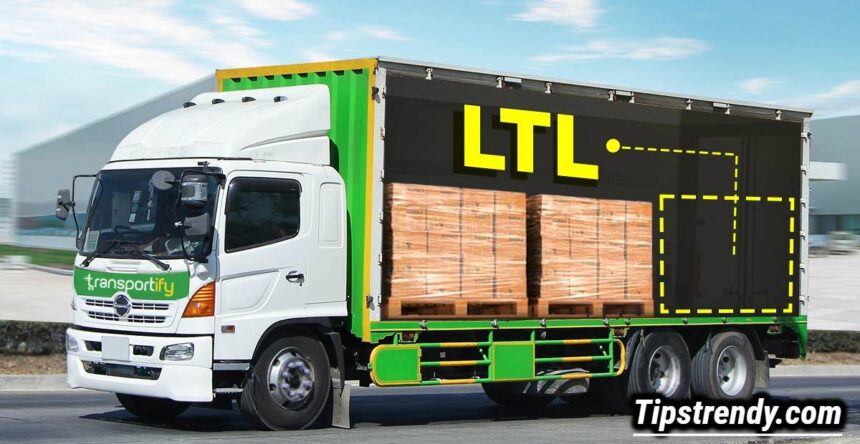Introduction to LTL Freight Shipping
LTL (Less-Than-Truckload) freight shipping is an essential component of the transportation industry, catering to businesses that do not require a full truckload for their goods. This shipping model allows multiple customer shipments to share the same truck space, optimizing resources and reducing costs. Not only does this make LTL freight more economical, but it also supports sustainability efforts by maximizing truck capacity and minimizing carbon emissions. As businesses increasingly look for efficient shipping solutions, LTL freight has become a popular choice for many.
By combining multiple small shipments into a single truck, LTL freight helps businesses save on transportation costs while contributing to environmental preservation. This approach ensures a more sustainable and economical shipping solution, benefiting companies of all sizes. With its ability to efficiently manage smaller shipments, LTL freight is particularly advantageous for small to medium-sized enterprises looking to optimize their supply chain operations.
Current Trends in LTL Freight Shipping
The LTL freight industry has seen significant changes in recent years. One notable trend is the growing need for quicker delivery times, resulting from the necessity for prompt order fulfillment and the speedy rise of e-commerce. As consumers expect same-day or next-day deliveries, businesses must shorten lead times and enhance their shipping capabilities. Another trend is the rise in advanced tracking systems, which offer real-time updates on shipment status, improving transparency and customer satisfaction. This trend is evident in adopting sophisticated technology solutions that provide accurate and timely tracking information.
Moreover, businesses are integrating technology to streamline their shipping processes. Using data analytics and machine learning, companies may increase productivity, reduce transit times, and optimize delivery routes. This adoption of digital tools speeds up operations and ensures higher accuracy and reliability in shipment deliveries. Predictive analytics further allows businesses to forecast demand and plan their shipping strategies more effectively, reducing delays and enhancing service quality.
The Impact of Technology
The role of technology in LTL shipping must be balanced. The industry is transforming rapidly with advancements like Internet of Things (IoT) devices, automated freight matching, and predictive analytics. IoT sensors ensure perishable items arrive at their destination in excellent condition, for instance, to check their condition in real-time. Such real-time monitoring is crucial for industries like pharmaceuticals and food, where maintaining product integrity is paramount.
Another technological innovation is the use of automated freight matching platforms. These platforms utilize advanced algorithms to connect shippers with carriers that have available capacity, significantly reducing empty miles and increasing overall efficiency. By optimizing load assignments, these systems help carriers maximize their truck usage and minimize fuel consumption, leading to cost savings and environmental benefits. Predictive analytics also play a critical role by anticipating potential delays and suggesting alternative routes, further enhancing the reliability of LTL freight services.
Eco-Friendly Shipping Solutions
Environmental sustainability is becoming a significant focus in freight shipping. Businesses are implementing environmentally friendly procedures, such as utilizing electric vehicles and optimizing loads to reduce emissions and fuel use. This shift towards greener logistics is essential for the industry’s future, contributing to global sustainability goals and reducing the carbon footprint. Companies proactively mitigate their environmental impact by investing in electric and hybrid vehicles and promoting cleaner transportation methods.
Additionally, some companies are exploring alternative fuels, such as biodiesel and natural gas, to further reduce their environmental impact. These programs assist in slowing down the effects of climate change and draw in customers who value sustainability while making judgments about what to buy. Furthermore, businesses are implementing route optimization and load consolidation strategies to enhance fuel efficiency and decrease the required trips, thus minimizing overall emissions.
Challenges in the Industry
Despite the advancements, the LTL freight industry faces several challenges. Capacity constraints, fluctuating fuel prices, and regulatory changes are some of the significant hurdles that companies must navigate. These factors can impact operational costs and affect the profitability of shipping services. Moreover, the industry must address concerns about the shortage of qualified drivers, which can impact delivery schedules and service quality. The growing demand for freight services has exacerbated the driver shortage, making it crucial for companies to invest in driver recruitment and retention strategies.
Another challenge is the need for improved infrastructure. As urbanization grows, cities face increasing congestion, making it difficult for trucks to navigate and deliver goods on time. Resolving these problems is essential to the industry’s efficiency and future growth. Companies must work closely with government agencies and other stakeholders to develop infrastructure projects that support efficient freight movement, such as dedicated truck lanes and improved logistics hubs.
Future Technologies to Watch
Emerging technologies like autonomous vehicles and blockchain are set to revolutionize freight shipping, reducing costs and increasing efficiency. Autonomous cars can operate continuously with minimal downtime, ensuring faster and more reliable deliveries. Blockchain technology offers enhanced security and transparency, ensuring integrity and trust in the supply chain. This integration benefits businesses and consumers, while autonomous vehicles alleviate driver shortage challenges.
Meeting Customer Demands
Companies must continuously innovate for faster, more reliable shipping solutions to meet customer expectations. This includes enhanced tracking systems, flexible delivery options, and improved customer service. Personalization and a focus on customer experience are becoming the norm. Real-time shipment information can help businesses stand out in a crowded market, building trust and openness. Companies that can adapt to these demands, such as offering value-added services like hassle-free returns and white-glove delivery, can increase customer satisfaction and loyalty.
Final Thoughts
The LTL freight shipping industry is transforming significantly due to technological advancements and evolving customer needs. Innovations can enhance efficiency, sustainability, and customer satisfaction. Businesses must adapt and prioritize client demands to thrive in this changing environment. Adopting cutting-edge technologies and sustainable practices can improve operational efficiency and contribute to a sustainable future.
